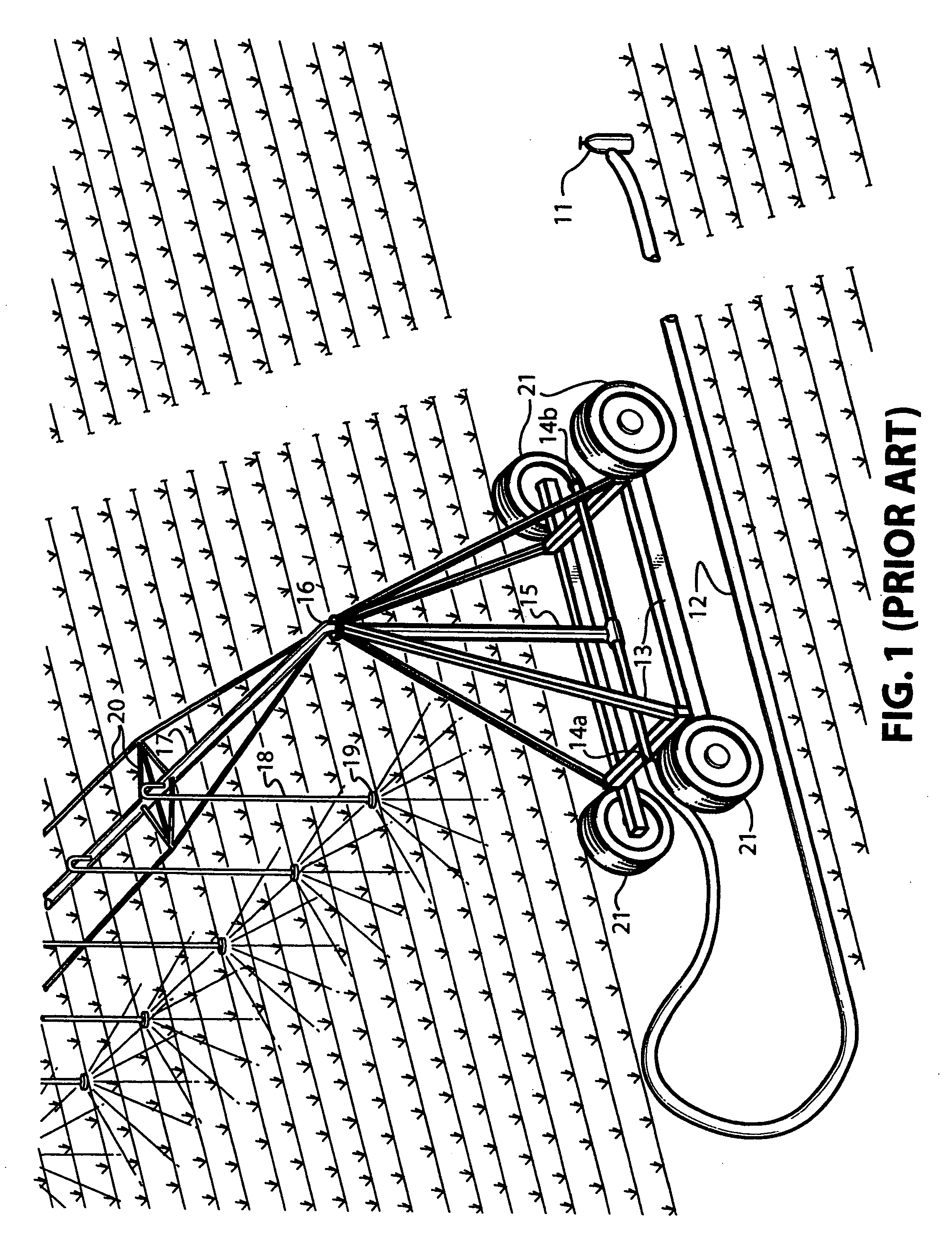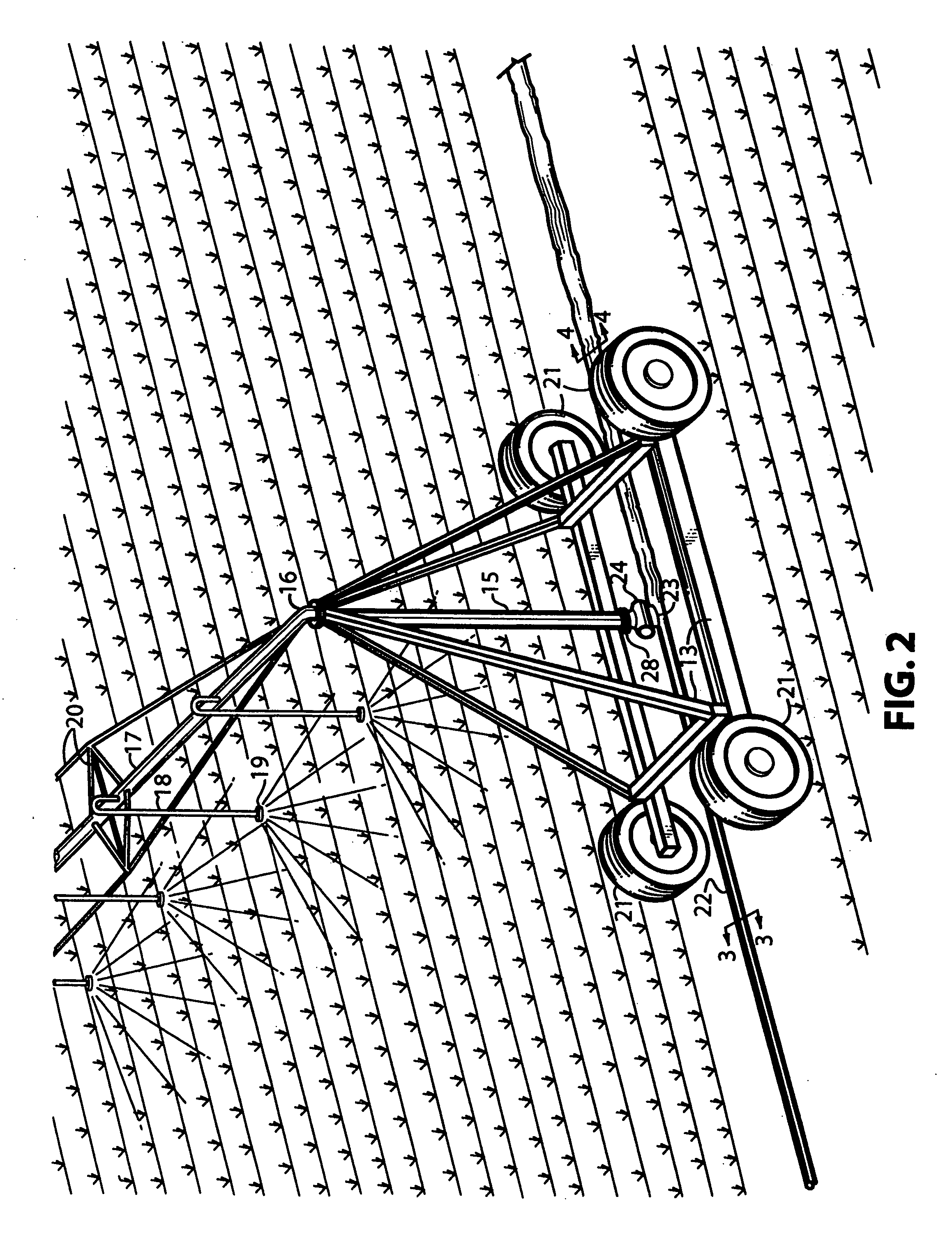Water supply system for a linearly moving sprinkler irrigation system
a linear moving sprinkler and water supply system technology, applied in water supply installation, mechanical equipment, transportation and packaging, etc., can solve the problems of high cost of overcoming it with existing technology, linear systems are not now as widely used, pivot systems, etc., to maximize the amount of water intercepted, economic and convenient manner
- Summary
- Abstract
- Description
- Claims
- Application Information
AI Technical Summary
Benefits of technology
Problems solved by technology
Method used
Image
Examples
second embodiment
[0055]FIGS. 13, 14, 15 and 16 illustrate the invention wherein a rigid stationary closed conduit 57 is substituted for collapsible stationary closed conduit 22. Rigid stationary closed conduit 57 has a longitudinal slit 58 that serves the same purpose as seam 25 in collapsible stationary closed conduit 22. Slit 58 is normally held closed and sealed by spring-like forces that can be created by pre-stressing forces in the walls of said rigid stationary closed conduit 57, or by other means. When a linear irrigation system moves along rigid stationary closed conduit 57, one half of a double wedge-shaped neck on a specially adapted pressurizing pickup shoe pries slit 58 open to create traveling opening 23.
[0056]FIG. 13 is similar to FIG. 7 and is a plan view of that portion of a specially adapted pressurizing pickup shoe 24a that would remain after a horizontal cut through neck 37a of said pressurizing pickup shoe 24a at a location just below the point where neck 37a meets concentrating ...
third embodiment
[0060] the invention utilizes a stationary open channel in place of the stationary closed conduits of earlier embodiments. An open channel may be feasible when the slope of the field to be irrigated is uniform and mild. The third embodiment differs from prior art in that a formed channel that conforms precisely to a flared inlet on a pressurizing pickup shoe is utilized such that virtually all of the water flowing in the open channel is picked up and sprayed onto the field. Any flow that does not get through the small gap between the flared inlet and the formed open channel is leakage and must be minimized by suitable sealing devices. The shape of the formed open channel can be as desired. One possibility is a cross section similar to that of rigid stationary closed conduit 57 as it appears in FIG. 15, except that the width of the open slit could be larger so that the length of the neck on the pressurizing pickup shoe could be shorter. The slot would be open at all locations so that...
PUM
 Login to View More
Login to View More Abstract
Description
Claims
Application Information
 Login to View More
Login to View More - R&D
- Intellectual Property
- Life Sciences
- Materials
- Tech Scout
- Unparalleled Data Quality
- Higher Quality Content
- 60% Fewer Hallucinations
Browse by: Latest US Patents, China's latest patents, Technical Efficacy Thesaurus, Application Domain, Technology Topic, Popular Technical Reports.
© 2025 PatSnap. All rights reserved.Legal|Privacy policy|Modern Slavery Act Transparency Statement|Sitemap|About US| Contact US: help@patsnap.com



